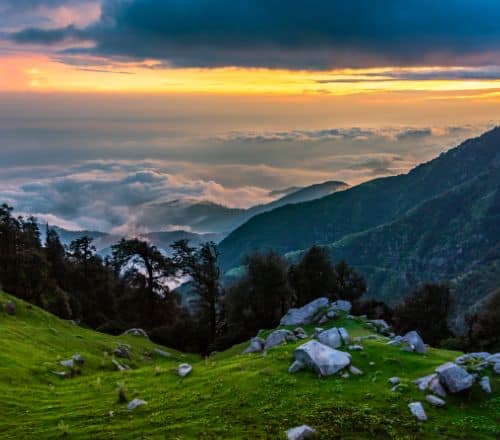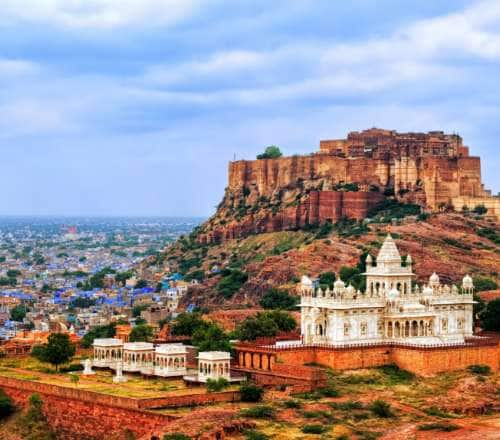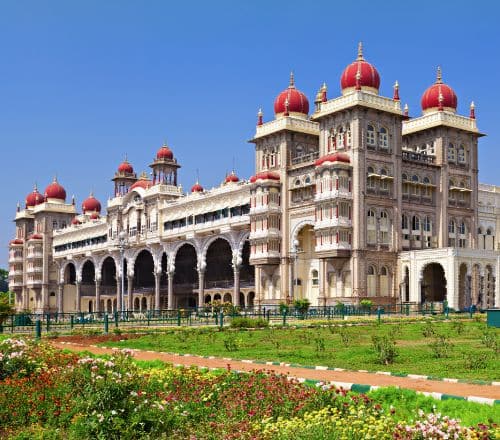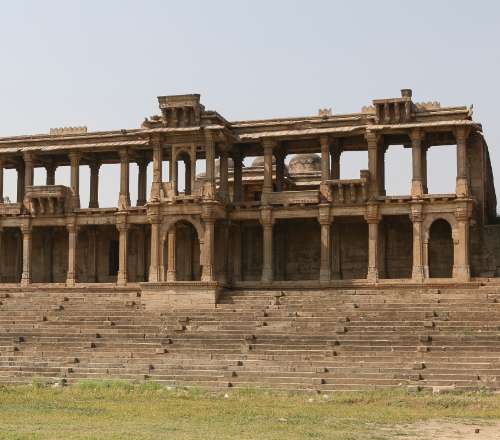Stay logged in to proceed with bookings, orders and offers.
On changing the terminal, you will loose items in your cart. Are you sure you want to change your terminal?
Amidst the hustle and bustle of Chandni Chowk’s bazaars lies an oasis of calm – what was once the abode of celebrated poet Mirza Ghalib.
Mirza Asadullah Khan – who is popularly known as Mirza Ghalib – was an eminent Urdu and Persian poet during the 19th-century Mughal era in the Indian Subcontinent. These were times when the sun was slowly setting on the Mughal Empire. However, the royal patronage of the arts continued, with the last Mughal Emperor Bahadur Shah Zafar appointing Ghalib as a royal historian — and later as poet laureate — to his court in 1850.
Together with his contemporary and critic, Mohammad Ibrahim Zauq, Ghalib was recognised as one of the three famous poets of the Mughal Empire. 'Three?' you ask. Well, it will come as no surprise to lovers of history and Urdu and Persian poetry that Emperor Bahadur Shah Zafar himself enjoyed writing couplets in Urdu.
According to historians, the rivalry between Mirza Ghalib and Zauq was the highlight of Bahadur Shah Zafar’s court. Their brilliance shone through during the impromptu poetry competitions – which were a battle of wits – where they would recite poems to take digs at each other. Some of these legendary works have made their way into Bollywood in the form of songs and couplets used as dialogue in Hindi movies.
The industry has also made several films on the life of Mirza Ghalib, with distinguished actors, such as Naseeruddin Shah and Bharat Bhushan, playing the titular role. In addition, renowned singers, such as Jagjit Singh, Mohammed Rafi, and Lata Mangeshkar, have paid tribute to Ghalib’s work with melodious renditions of his ghazals.
While I read most of Ghalib's works in college, I was not much familiar with his personal life. I presumed that he was a rich man and did not have to worry about his next meal. It was much later that I realised he lived most of his life in debt when I read books on the life of Ghalib. Interestingly, Ghalib was born into an aristocratic family and many of his ancestors served in the armies of the Mughals.
His youth was spent in indulgences and he never had a regular source of income. Ghalib spent much of his later life dependent on the grants of his patrons and the goodwill of his friends and admirers.
A Delhi-based Urdu newspaper published an article on Ghalib’s birthday. Always eager to learn more about the poet, I promptly started reading the piece. Right away, I came upon this information: Ghalib had a haveli (mansion) in the heritage quarter of Chandni Chowk, in Delhi. This piece of information piqued my curiosity. I always thought that Ghalib had accommodation inside the royal palace considering he was the most beloved poet of the Mughal court. I immediately decided to pay a visit to his residence to get a feel of the man behind the legendary poems.
One fine morning, I hopped aboard the Delhi Metro to travel to the Chawri Bazaar metro station (on the Yellow Line). After exiting the station, I followed the map on my phone as I walked towards Ballimaran where the haveli is situated. It is barely an 800-m walk to the mansion from the metro station, but it took me some time to negotiate the congested route. Here's a tip – it is advisable to walk to the haveli from the metro station to avoid getting stuck in traffic. So, be sure to wear comfortable walking shoes.
When I reached the main entrance near Ballimaran, I was surprised to find that the lane leading to the haveli was crammed with shops selling footwear. I was expecting large signboards directing visitors towards the mansion, but I was unable to find any. All I saw were shop boards and hoardings advertising various goods and services. A couple of turns and detours later, I was directed to a narrow lane that had a small board with 'Ghalib Memorial' inscribed on it. I'd finally found Ghalib's haveli!
I checked with the guard for directions to the ticket counter. However, I was informed that there is no entrance fee for visiting the haveli. I walked through an old wooden doorway and emerged into an open hallway. Here, I was greeted by a rather life-like stone bust of Mirza Ghalib. The walls of the hallway are ornamented with the reproductions of several poems, couplets, and ghazals written by Ghalib.
The 300-year-old haveli retains its original sandstone floors and lakhori stonework. The mansion was originally owned by a wealthy physician. He was a great admirer of Ghalib’s work and presented the mansion as a gift to him. Mirza Ghalib lived the last decade of his life in this haveli from 1860 to 1869. It was here that Ghalib composed some of his most famous poems and ghazals. On most evenings, an audience would gather in the courtyard of the haveli and Ghalib would entertain them by reciting some of his finest ghazals and poems.
Inside the haveli, there are various objects on display to give visitors a feel of the day and age of Ghalib. You will see replicas of his diary and stationery as well as kitchen utensils in what looks like a scene frozen in time. The haveli is also home to several portraits of Ghalib, his hand-written books, letters, and couplets. Ghalib wrote over 11,000 couplets in Persian. When he was not engrossed in composing ghazals and poetry, Ghalib liked to play chess and even the traditional board game of chausar.
One of the rooms in the haveli houses a replica of his wife Umrao Begum’s dress as well as one of a dress worn by Ghalib, with a detailed description of the latter's sartorial choices. Don't miss the collage of couplets not just written by Ghalib, but also by Zauq, Momin Khan Momin, and Abu Zafar.
After Ghalib died in 1869, the haveli changed hands several times. The ownership of the mansion briefly went back to the physician. However, the physician was very depressed after Ghalib's demise and soon passed away without leaving a will. In 1964, the government took over the property and it was later bought by Mohammed Ali Farooqi. He died without leaving an heir to the property. This led to the mansion being usurped by tenants and made way for several shops and godowns to use the space.
It is worth mentioning here that the original haveli was bigger than the structure we see today. Had it not been for an initiative by the Delhi Government, the place would have been lost. In 1999, the Delhi Government acquired a portion of the haveli. After carrying out an extensive restoration of the space, it was dedicated to showcasing the life and works of Ghalib.
Mirza Ghalib’s haveli is not a large structure anymore – even the memorial dedicated to his works is barely one-third the size of the original mansion. Nevertheless, the greatness of the poet shines through in the legacy he left behind. When you come here, pause awhile to simply bask in the aura of the great man who once inhabited this space.
For literature enthusiasts and admirers of Ghalib's poetry, a visit to his abode is nothing short of a pilgrimage of sorts.
Mirza Ghalib’s haveli is not a large structure anymore – even the memorial dedicated to his works is barely one-third the size of the original mansion. Nevertheless, the greatness of the poet shines through in the legacy he left behind. When you come here, pause awhile to simply bask in the aura of the great man who once inhabited this space.
For literature enthusiasts and admirers of Ghalib's poetry, a visit to his abode is nothing short of a pilgrimage of sorts.
Practical Information: Ghalib's Haveli is open from 11.00 am to 6.00 pm from Tuesday to Sunday. It remains closed on Mondays and government holidays.





The Adani One expressly disclaims all liability, direct and indirect, in respect to actions taken or not taken based on any or all the contents of this Blog. The Blog is an opinion of the contributor based on the collation of data from various sources and is provided only for information purpose. Adani One does not canvass, advertise, solicit, invite or induct for any product, merchandise, information, brand or any other materials mentioned in the Blog, nor does it obtain any monetary benefit from the same. Reader is advised to read and apply his/her intellect and discretion in this regard. Any Intellectual Property mentioned in this blog belongs to the rightful owner. We do not intent to claim any interest over the same.